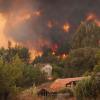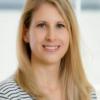
The unequal distribution of wildfire risk in our society is influenced by various factors, such as social vulnerabilities and intersecting forms of inequality, including gender, age, ethnicity, or disability. A new article calls for more integrated and inclusive wildfire risk management approaches and proposes a novel framework mapping different justice aspects.
The frequency and severity of wildfires have become increasingly alarming in recent years, substantially due to the effects of climate change. Rising global temperatures, altered weather patterns, and prolonged droughts are all consequences of climate change that contribute to the heightened risk of wildfires.
The 2019-2020 Australian wildfires demonstrated that compound climatic events – long-lasting record high temperatures combined with record low precipitation – can lead to unprecedented large-scale impacts. These fires affected 80% of the people living in Australia in some way. As a result, there were disagreements about who should have access to reconstruction funding, and who should move to safer areas. In fact, these disagreements reflect different perceptions by different stakeholders of what is just in terms of outcomes and processes.
While there is some literature focusing on justice aspects in relation to management of other hazards, such as floods, hurricanes, and earthquakes, existing literature on wildfire risk management has paid little attention to individual justice issues so far. In a new article, published in Nature Climate Change, IIASA researchers, together with colleagues from the Fraunhofer Institute for Technological Trend Analysis (INT) and the Forest Science and Technology Centre of Catalonia (CTFC), argue that three domains of justice need to be considered for the transition to integrated and inclusive wildfire risk management approaches: distributional justice, procedural justice, and restorative justice.
“The distributional justice aspect focuses on who should bear the costs and benefits of wildfire risk management. Procedural justice looks at policy selection and which stakeholders are heard when developing wildfire risk management measures. Restorative justice addresses restoration and compensation mechanisms, including insurance,” explains lead author Thomas Schinko, a senior IIASA researcher who also leads the Equity and Justice Research Group in the IIASA Population and Just Societies Program. “These three dimensions of justice are considered key in the fields of environmental, climate, and disaster justice.”
Figure 1: Aspects of distributional, procedural, and restorative justice applied to the wildfire risk management context.
The framework’s objective is to provide a comprehensive categorization of the three dimensions of justice against the four phases of the wildfire risk management cycle: 1. Prevention, 2. Preparedness, 3. Response, and 4. Recovery and Adaptation.
“The framework shows that distributional, procedural, and restorative justice challenges arise along all four wildfire risk management phases, and across social, economic, cultural, and ecological dimensions that impact the risk management process,” notes Schinko.
“They are linked to trade-offs arising from actions and inactions influencing hazards, exposures and vulnerabilities, and may lead to conflicts among stakeholders,” adds coauthor Claudia Berchtold, a senior researcher at Fraunhofer INT.
Eduard Plana, a coauthor and Department Head at the Forest Science and Technology Centre of Catalonia (CTFC), stresses that “operationalizing integrated and just approaches to wildfire risk management is urgently needed as societies deal with a fundamentally changing wildfire risk context, while at the same time scaling up their climate change mitigation ambitions.”
Schinko and his colleagues argue that more inclusive and integrative wildfire risk management strategies should also be connected to the Just Transition discourse. In recent years, the concept has gained traction with reference to meeting climate goals by ensuring that everyone – all communities, workers, and social groups – are brought along in the pivot to a net-zero future, leaving no one behind.
“This framework helps us to identify justice aspects across all four wildfire risk management phases. It sets out the conceptual basis for further in-depth analyses, such as focusing on how wildfires affect indigenous communities. Additionally, it provides a foundation for risk management and governance practices to include important distributional, procedural, and restorative justice considerations. This is particularly relevant when working towards a Just Transition to more holistic wildfire risk management strategies and approaches,” concludes Schinko.
Reference
Schinko, T., Berchtold, C., Handmer, J., Deubelli-Hwang, T., Preinfalk, E., Linnerooth-Bayer, J., Scolobig, A., Serra, M., Plana, E. (2023). A framework for considering justice aspects in integrated wildfire risk management Nature Climate Change DOI: 10.1038/s41558-023-01726-0
News

22 July 2024
Are sustainable aviation fuels truly sustainable?

17 July 2024
Forests endure as carbon sink despite regional pressures

16 July 2024


